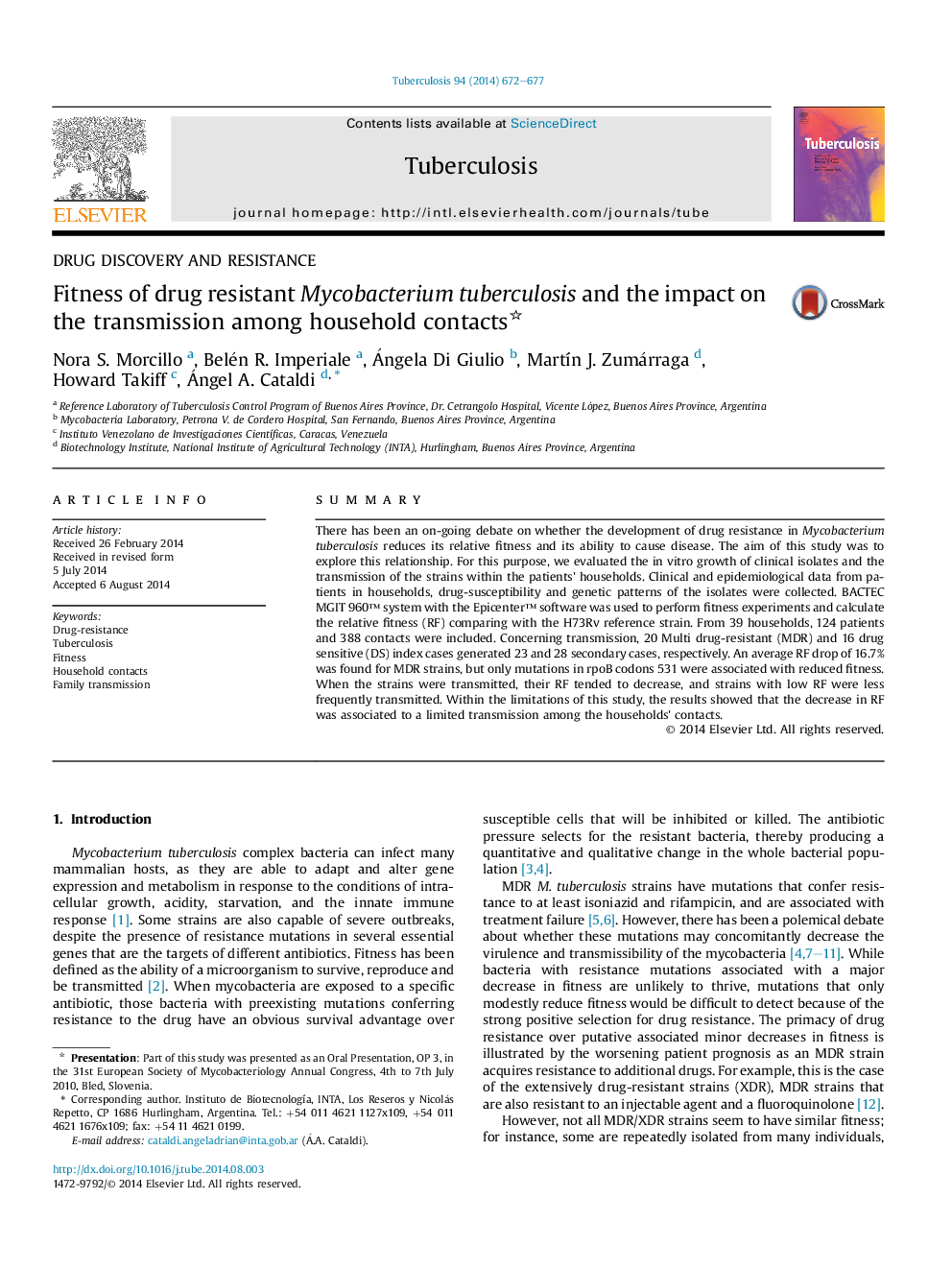| Article ID | Journal | Published Year | Pages | File Type |
|---|---|---|---|---|
| 10962071 | Tuberculosis | 2014 | 6 Pages |
Abstract
There has been an on-going debate on whether the development of drug resistance in Mycobacterium tuberculosis reduces its relative fitness and its ability to cause disease. The aim of this study was to explore this relationship. For this purpose, we evaluated the in vitro growth of clinical isolates and the transmission of the strains within the patients' households. Clinical and epidemiological data from patients in households, drug-susceptibility and genetic patterns of the isolates were collected. BACTEC MGIT 960⢠system with the Epicenter⢠software was used to perform fitness experiments and calculate the relative fitness (RF) comparing with the H73Rv reference strain. From 39 households, 124 patients and 388 contacts were included. Concerning transmission, 20 Multi drug-resistant (MDR) and 16 drug sensitive (DS) index cases generated 23 and 28 secondary cases, respectively. An average RF drop of 16.7% was found for MDR strains, but only mutations in rpoB codons 531 were associated with reduced fitness. When the strains were transmitted, their RF tended to decrease, and strains with low RF were less frequently transmitted. Within the limitations of this study, the results showed that the decrease in RF was associated to a limited transmission among the households' contacts.
Related Topics
Life Sciences
Immunology and Microbiology
Applied Microbiology and Biotechnology
Authors
Nora S. Morcillo, Belén R. Imperiale, Ángela Di Giulio, MartÃn J. Zumárraga, Howard Takiff, Ángel A. Cataldi,
